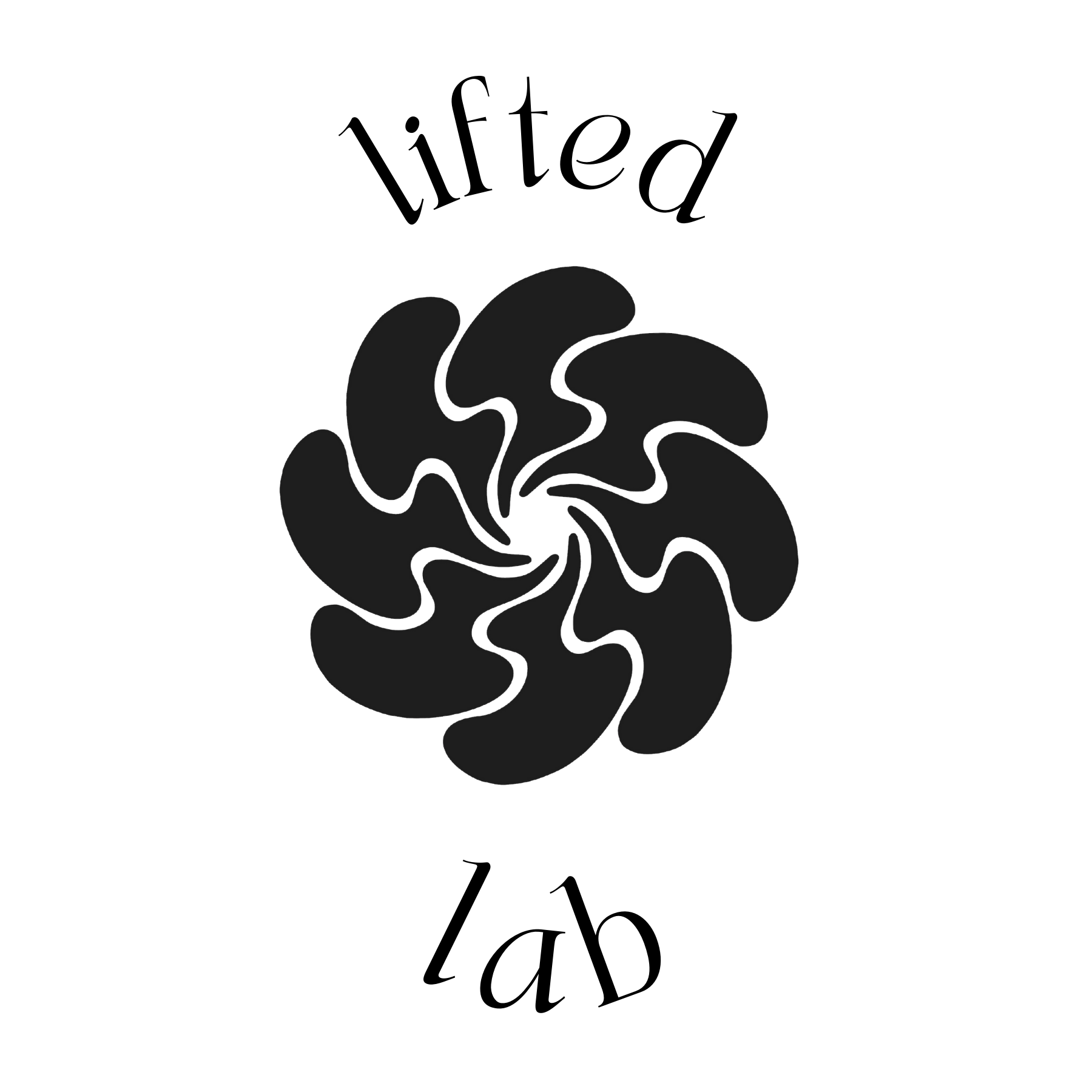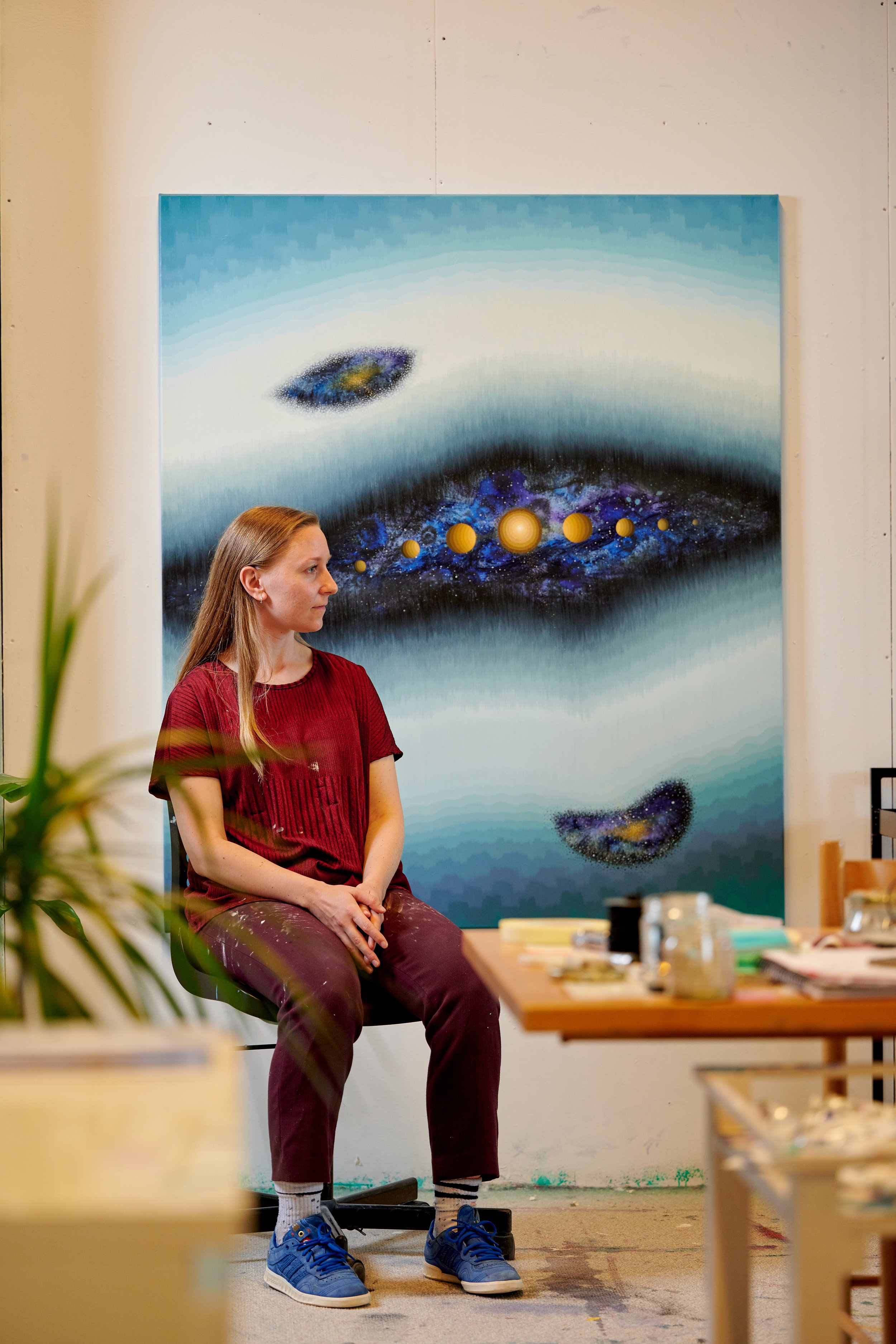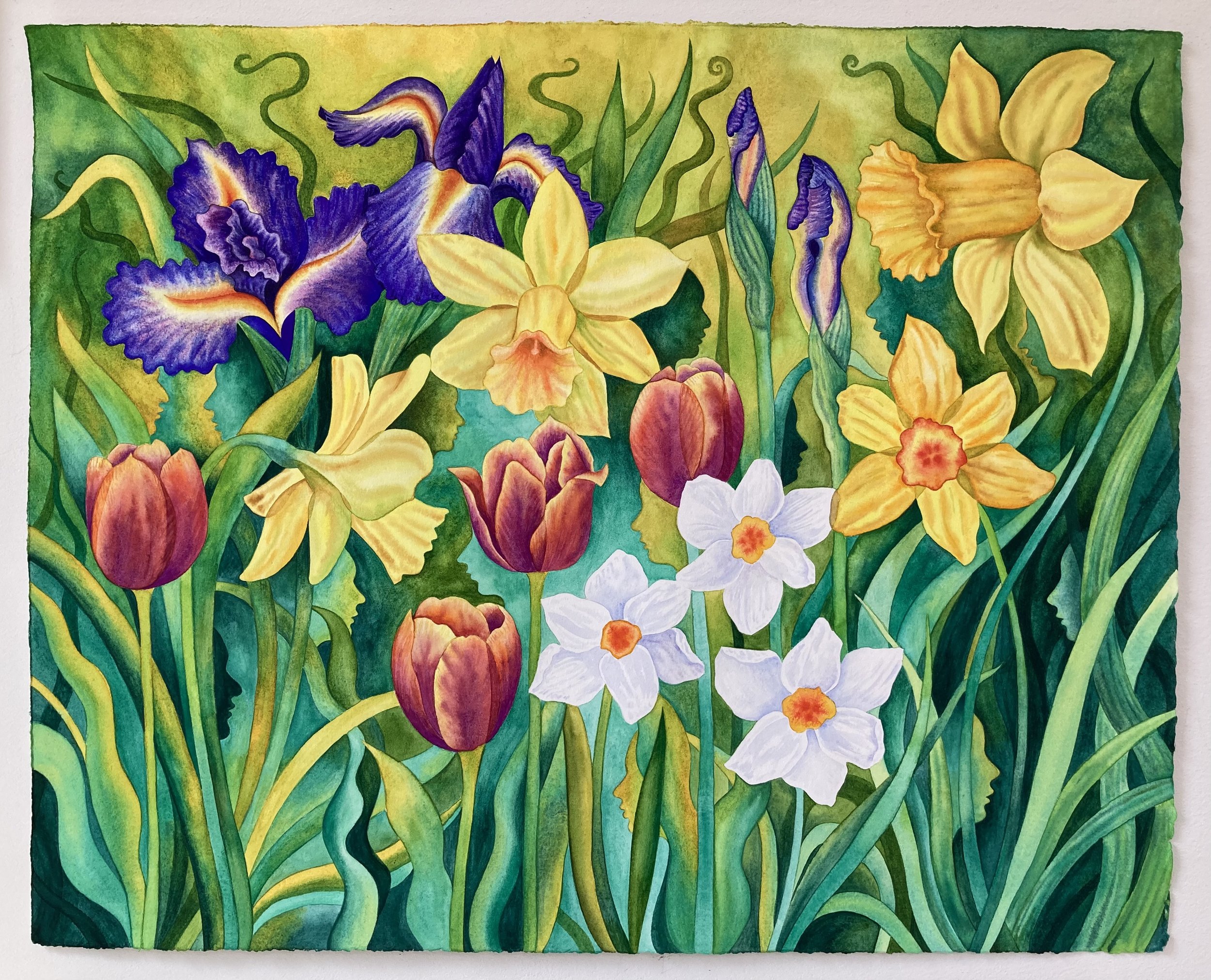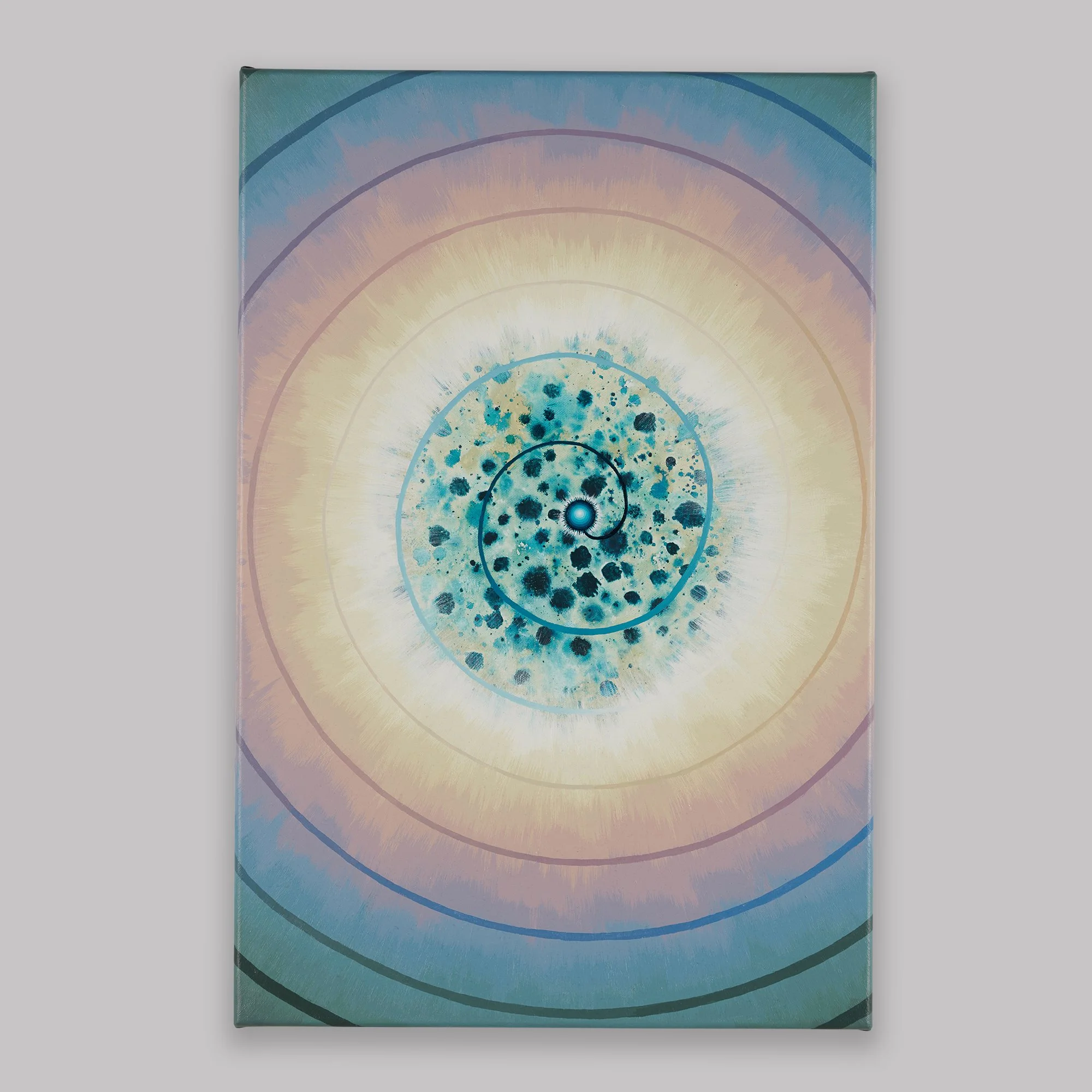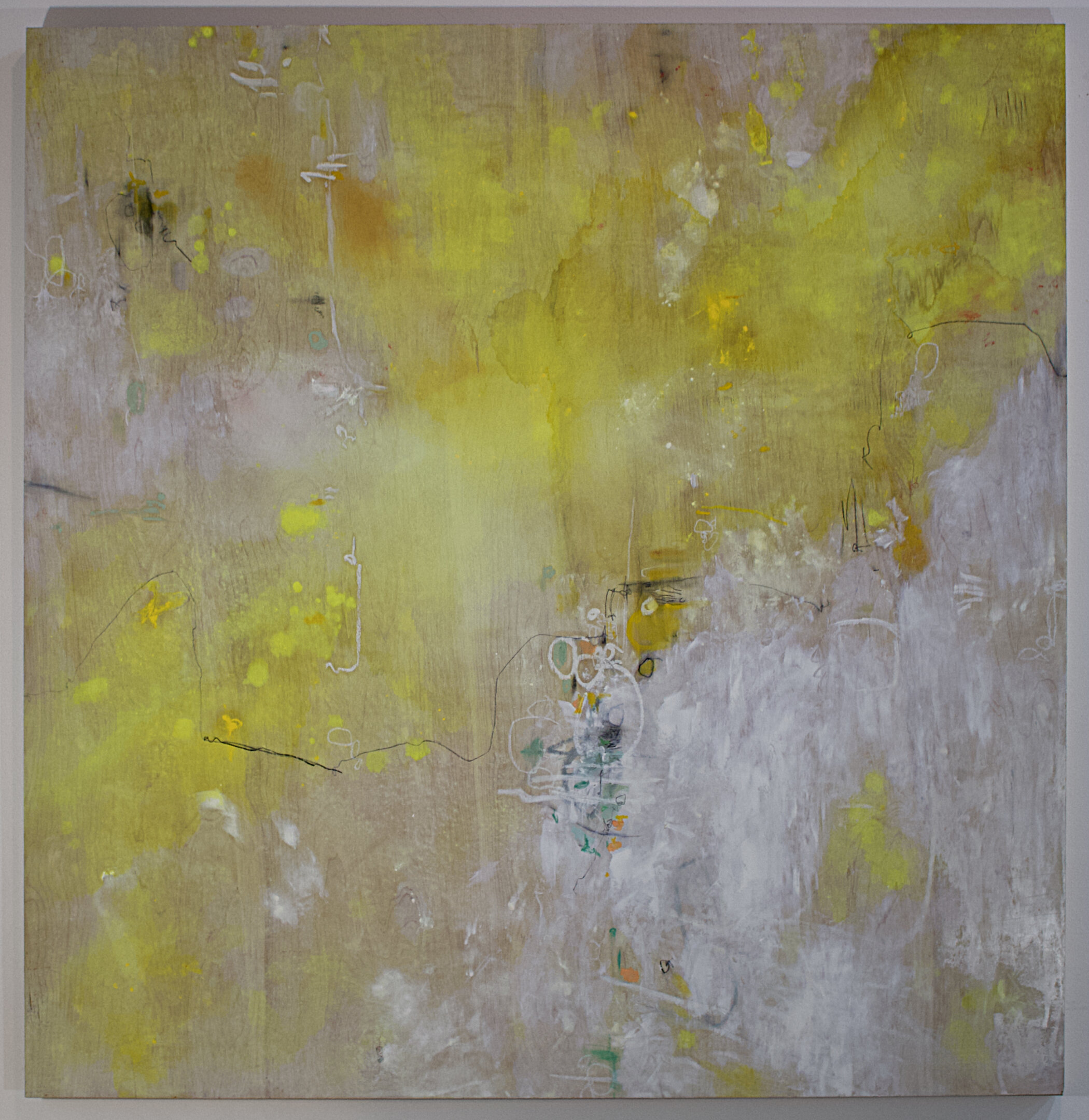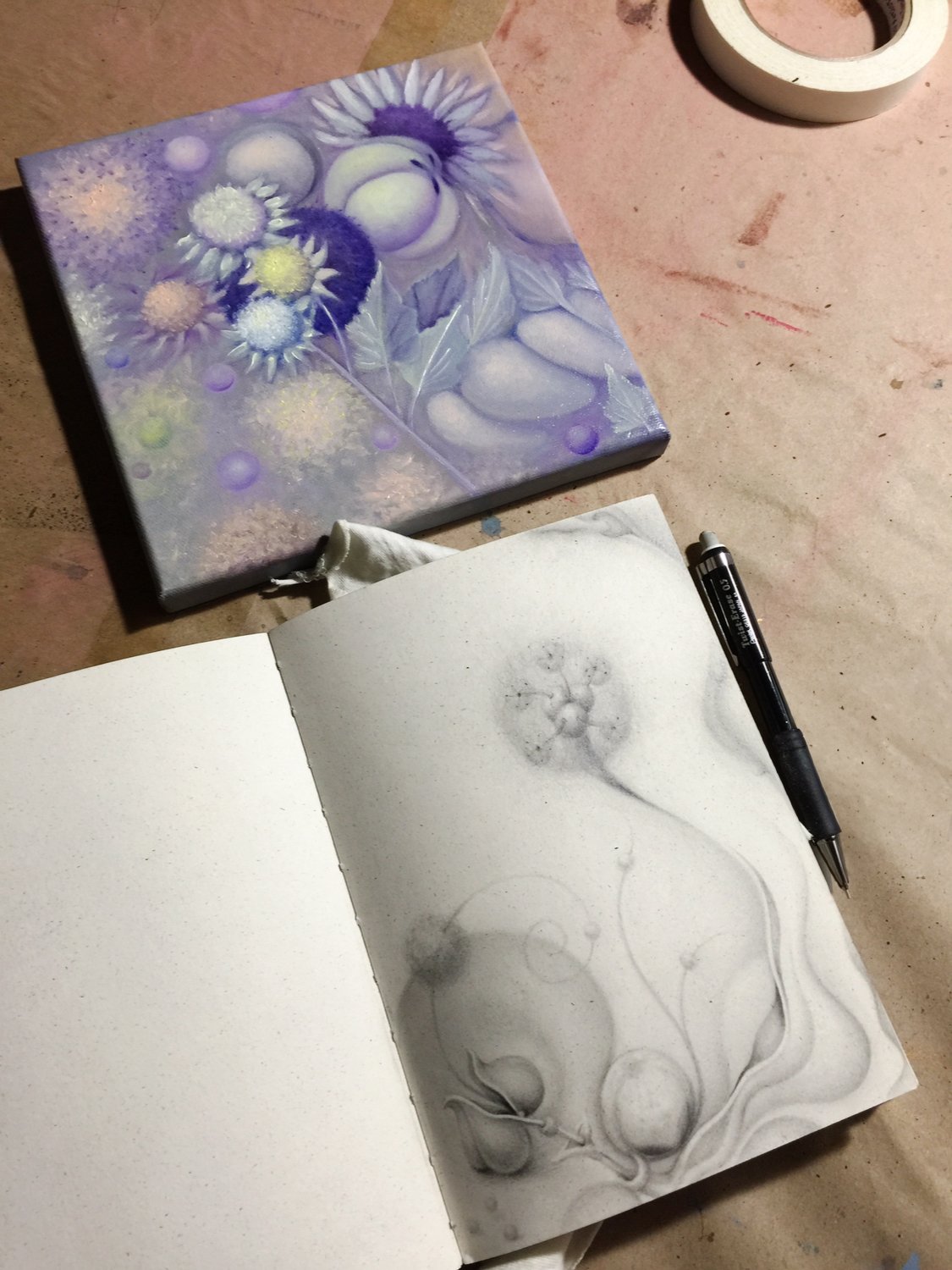Artists in Conversation: Erika Somogyi and Rebekka Borum

Brooklyn-based artist Erika Somogyi and Danish artist Rebekka Borum have never met in person but thanks to the internet have been connected for the past few years through a mutual curiosity and admiration for one another’s art. This conversation between the two opens up insight into their creative processes and inspirations while giving us better understanding of their meaningful explorations of human consciousness in both the micro and macro moments of daily life.
Erika: Let's start at the beginning and talk about your creative process when creating new work. Do you know how it will look when you begin? Do you make sketches or mock ups?
Rebekka: The way I start a new work differs slightly from time to time and has developed throughout the years. Generally, I start with a central element. This could either be an element from a previous work I want to explore further or a background made with water, acrylics and many drips to create a universe or a bacteria dimension to base my work around. From here, it is a matter of adding and subtracting. I tend to start at the centre-point of the work and then move towards the edges.
Rebekka Borum working at her studio in Denmark
I never have a preconception or comprehensive sketch to base my work off; I specifically try to avoid this, as I like to keep the process open and intuitive, and I try to allow myself to be surprised with the changes and unexpected elements in the process. Another exciting aspect of not working with a finished sketch is how time can affect and transform a work. It usually takes me a few months or upwards of half a year to complete a piece. As I work with the painting, some kind of visual direction tends to appear, but even with this direction, I sometimes feel stuck and set the work aside for some time (except those few cases where I finish it with no significant breaks). The time the painting rests (or I rest from it), I work with other paintings, where I learn new ways to express myself and delve into new topics of interest. When I continue the work, I bring in this new energy or knowledge, even if it means that the work takes another direction than first expected.
Rebekka Borum, “Insanely Visionary,” 133cm x 111 cm, 2019.
Even though I am not working from a complete sketch, I sometimes sketch during the process. For instance, if I want to try out something before painting it on the canvas, or if I need to check if a vision is even possible to make. Moreover, I often add a few pencil lines to the work during the process to keep elements aligned. Precision and symmetry are vital aspects of my painting process. Therefore, it is necessary to do a bit of measuring; however, I strive to do as little as possible to give the work a bit of crookedness and make it a technical challenge.
Rebekka: What about you? I am curious to know if sketching is a technique you use in your works (and how)? Also your works seem to consist of layers, how do you build these?
Erika: I am always sketching. Each work starts in my sketchbook as a little 3 inch rectangle in which I first lay out the idea. All of these quick drawings don’t make it into paintings. There are a few on each page. It helps me organize and keep track of all my ideas. When I begin a work I draw out the forms lightly in pencil. This is where the structured elements come from. I then layer washes of watercolor and add more details and washes as I go. I love the transparency of watercolor and to see the passage of time through the layers. I have been making some oil paintings and it feels so different!
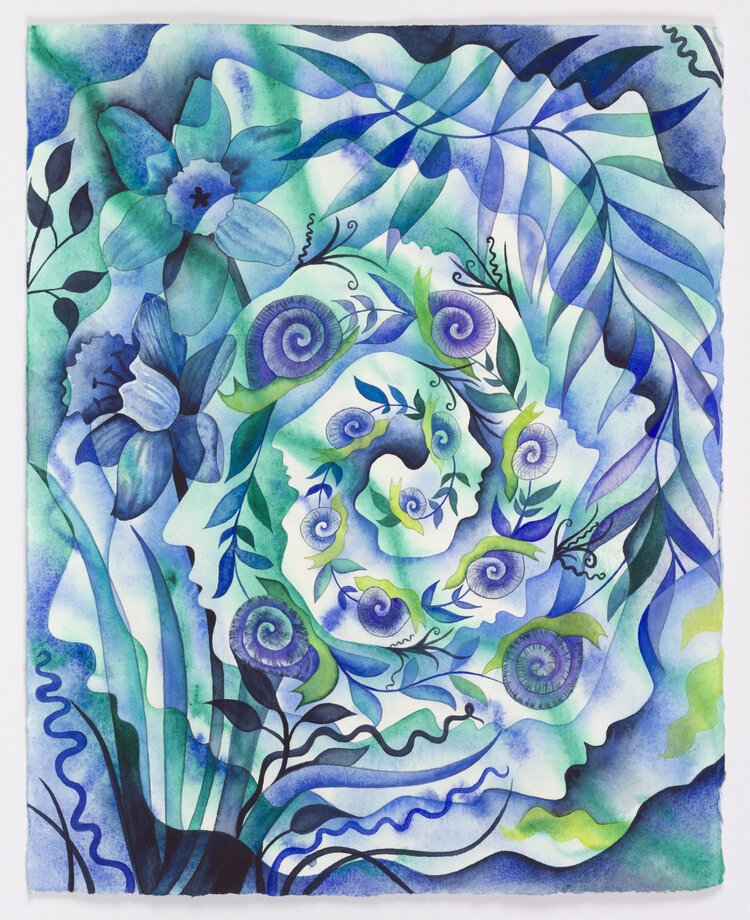
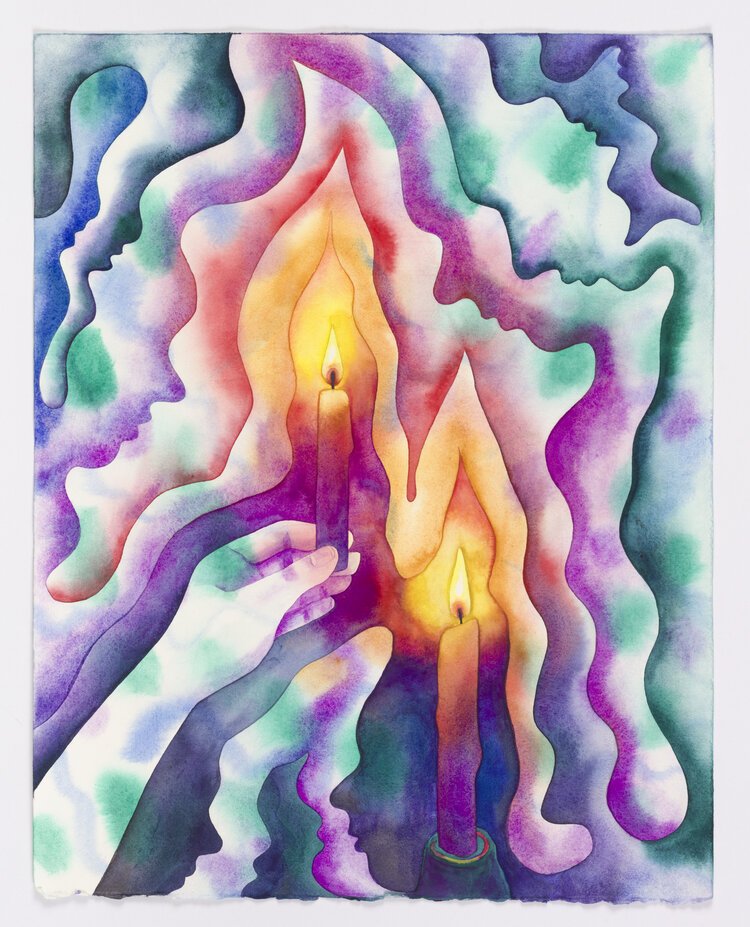
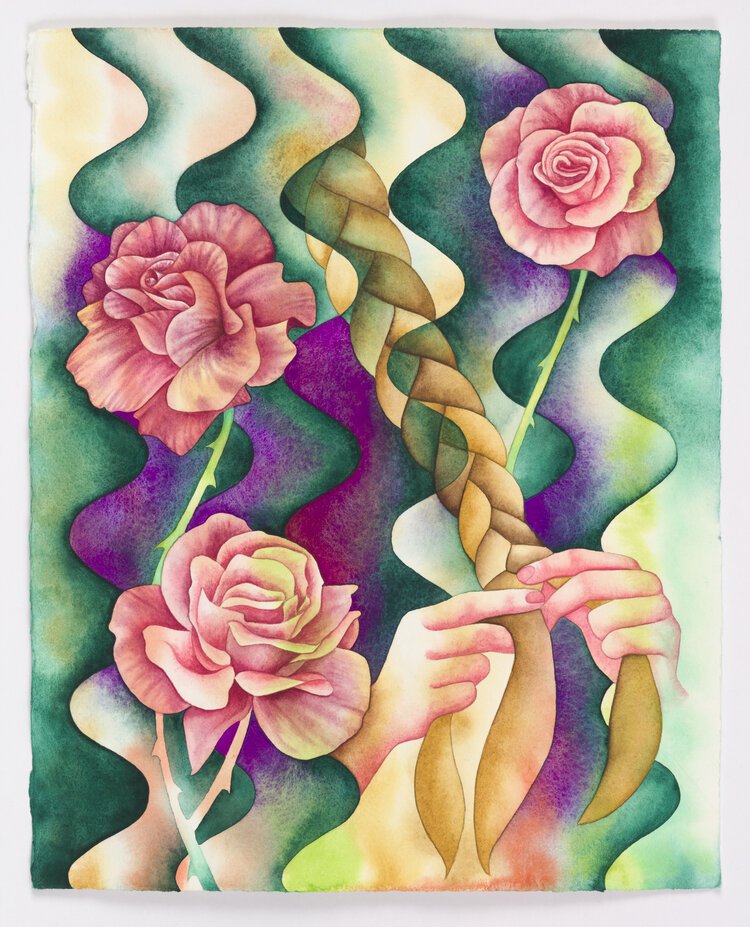
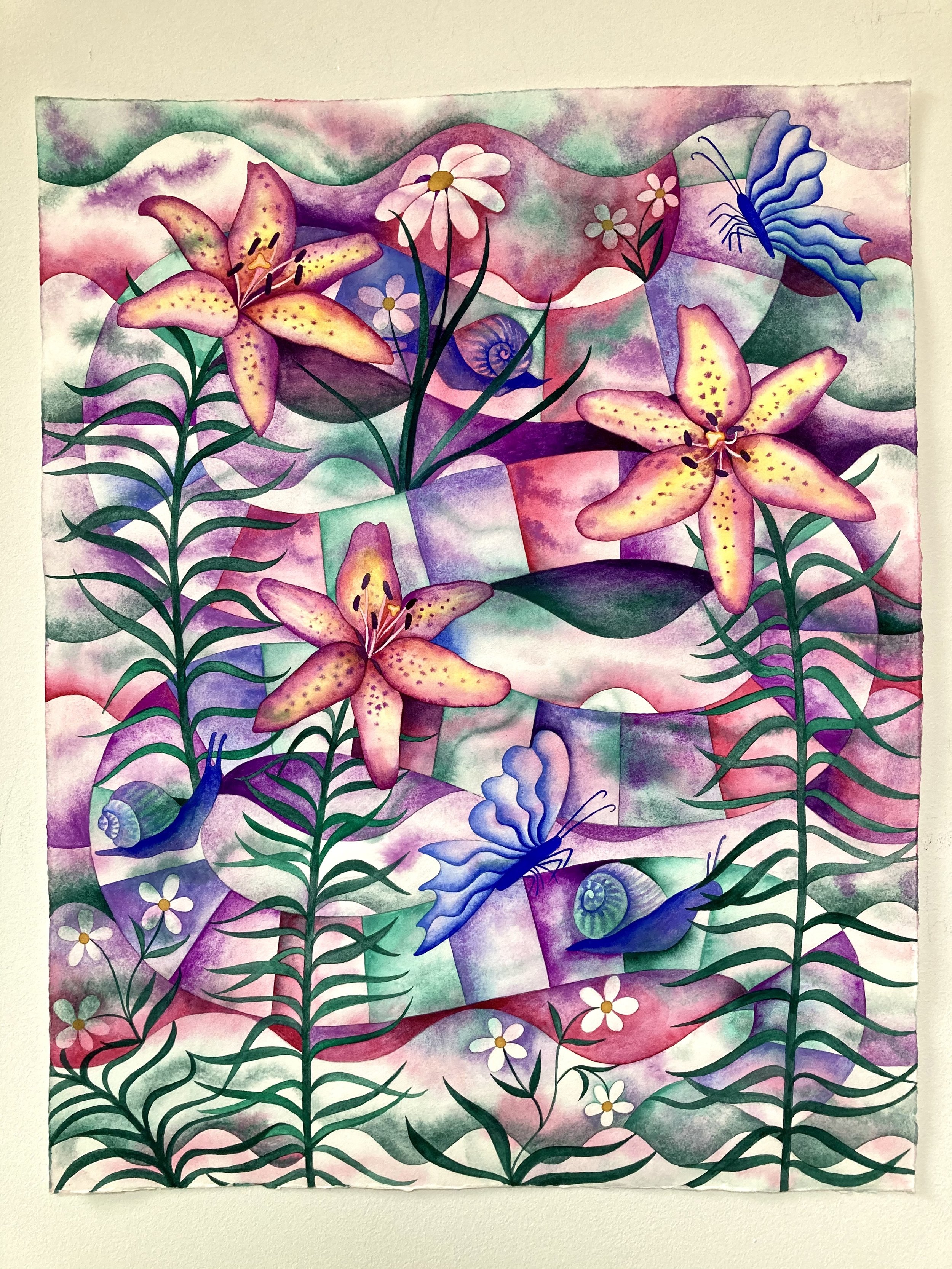
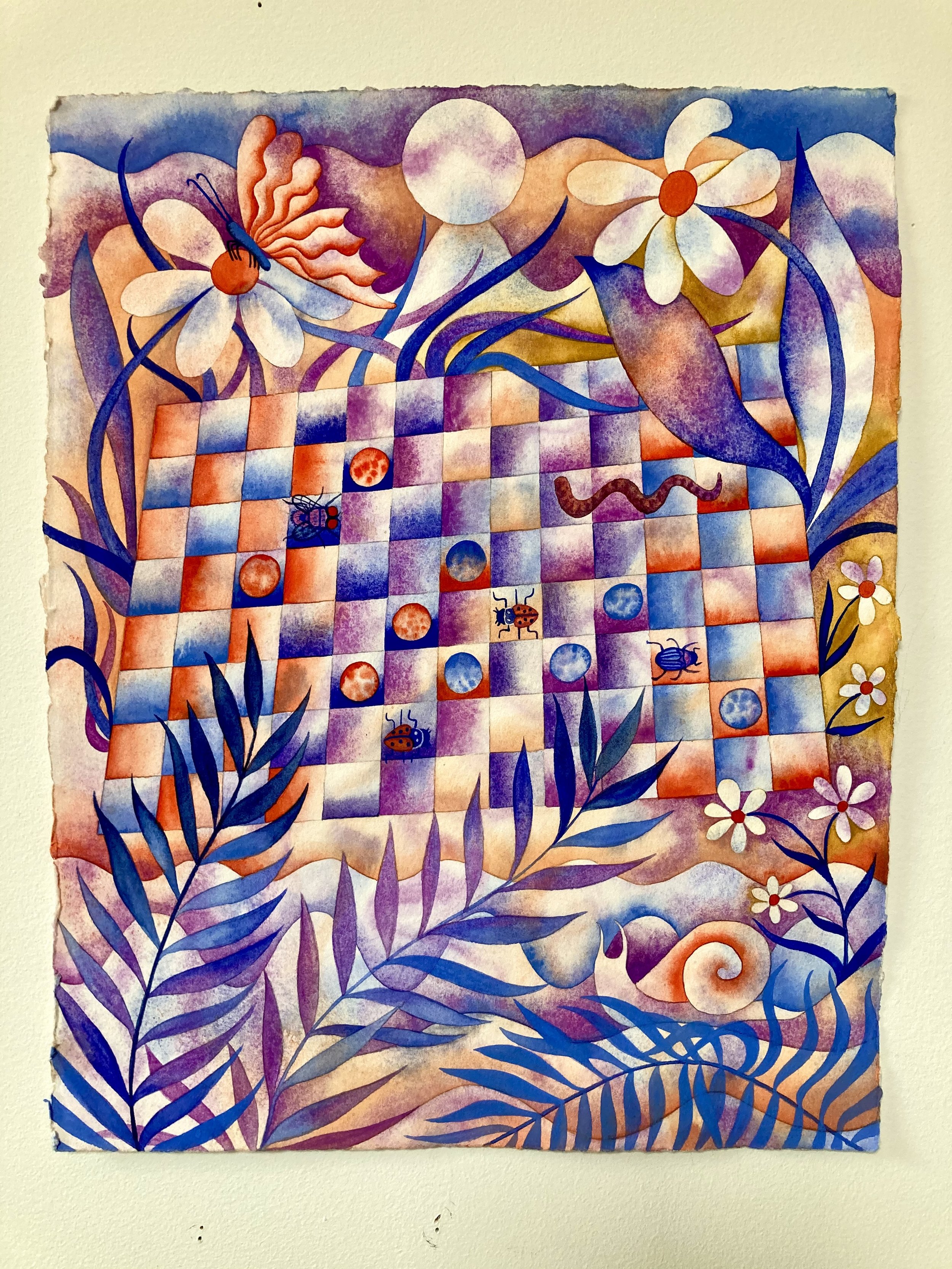
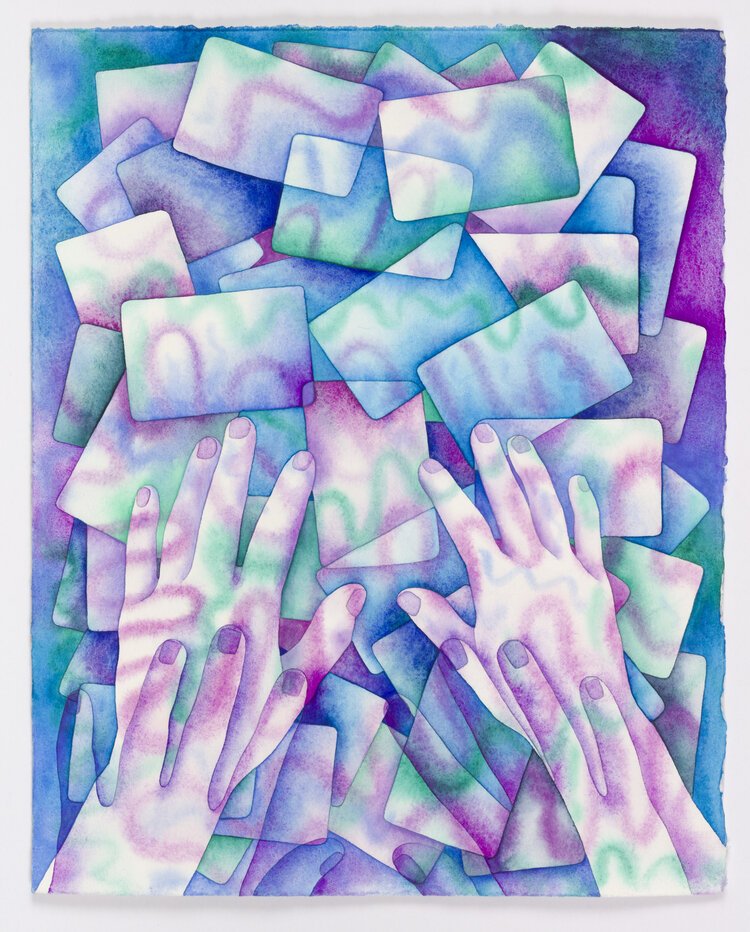
It has been a challenge to work with such distinct materials especially since the white of the paper is such a big part of my watercolors. It’s like starting over again! But, learning about transparent oil colors and glazes has been fascinating to me. And I feel I am finally creating oil works that speak to my watercolors while also having their own unique presence. In both mediums, like you, I also enjoy an intuitive process and embrace the unexpected. Even with my sketches, each work takes on a path of its own.
Erika Somogyi, Eternal Spring, watercolor on paper, 16in x20in, 2022.
Erika: Your work has an otherworldly feel. For me it alternates between psychological and cosmological. Can you tell me about what inspires you?
Rebekka: I am glad this is what you see in my works. I am very inspired by cosmology, which is a branch of astronomy dealing with the origin of the universe and how it evolves. This is interesting to me in a scientific sense (understanding celestial objects) and how the creation and evolution of the universe are viewed in religion and spirituality. These aspects are genuinely the wonders of life, and I believe we can learn many great things about ourselves when investigating the fundamentals of our existence. Moreover, they are the core of existentialism and raise questions about life on earth, extraterrestrial life, perception and consciousness.
Another area I find my inspiration within, which is related to existentialism, is psychology. I am very interested in the duality of good and evil and how this is viewed in psychology (as well as in philosophy and religion). The light and darkness contrast symbolizes the moral dichotomy of good and evil used in mythology for decades. My paintings consist primarily of elements built up by elements of brightness and shades. I do this by painting nuances starting either from bright to shady or the opposite way around. For me, light and darkness are very dependent on each other to give the illusion of depth. These nuances help create an effect of drawing the viewer into the work (into the light or darkness), as well as these elements contain a symbolic meaning.
Painting by Rebekka Borum
Erika: There is also the sense that I am looking at something under a microscope or through a telescope. Can you speak about this?
Rebekka: I am very fascinated by things that cannot be seen with the naked eye, as it makes the invisible visible. Optical instruments enable the perception of the microscopic and the telescopic world around us. I genuinely understand why humanity always had an urge to look beyond the visible. Things that cannot be seen with the naked eye can significantly impact us (viruses, bacteria, meteorites or other celestial events). These things can potentially be lurking catastrophes and remind us of our individual fragility. Personally, looking at images of magnified objects such as bacterias or celestial objects puts life in perspective. We are part of something much bigger than ourselves. For me, this thought can both be anxiety-provoking and cause gratitude about life when you see it as part of something grander. In general, I try to convey some of these aspects through my works.
Erika Somogyi, “One in a Vermillion,” watercolor on paper, 16in x20in, 2022.
Rebekka: When I look at your work, I feel a kind of magical or significant moment in time. What inspires your work? And what is the relation between abstraction and figuration in your work?
Erika: Yes, exactly! I am directly inspired by my life with my family and the natural world. My daughters are my models and my muses at times. As a mother a lot of my day is filled with mundane moments, the day to day of child rearing and all that comes with it. But these everyday moments can also have a magical, significant aspect to them if you alter your perspective, whether it’s seeing things through your child’s experience or simply being present. I’ve always been inspired by nature, the color and the shapes and how light is always changing how things appear. Using abstraction in my work I depict energy and the relationship between forms, for example how the waves of hair are like the waves of the sea or sound waves and heat waves or the profile of a figure. Similarly the pleats of a fan mimic the pleats on flower petals unfurling which also share the lines on a seashell or a hand of cards. In this way each painting inspires the next one in a body of work.
Erika Somogyi, “Heat Wave,” Watercolor on paper, 20 x 16 inches, 2021.
Erika: I like how your work is evolving into 3D pieces and how this creates a new way to interact with the waves and patterns that you paint. Do you have a different approach to working on your sculptural works? Can you talk about how they came to be part of your practice?
I had the idea of making a half sphere for almost two years before actually making it. It took some time to digest the concept, both practically and artistically. At the end of 2019, I involved a couple of artisans in the idea, and with help from them, it was developed from there.
I have always worked a lot with depth in my paintings, so it seemed natural to include this within the form itself. It is a way to enhance the sense of depth (both convex and concave). Even more than a flat painting, the form can also allow me to disrupt the viewer's perception of the work by making an element seem to pop out of the work or the opposite. Moreover, I am aware that the third-dimensionality contains more angles to explore, and all sides of the work cannot be seen at once. The piece requires you to move around it to examine the entirety of it. Therefore, I work a lot with subtle tweaking of the colours around the work.
Rebekka Borum, “Mutualism,” 45cm x 9.5 cm, 2020,
I have noticed that I work more with symmetry on three-dimensional works. They somehow seem to invite this. Also, since I changed to wood (I began by making them in plaster), I have been very inspired by the material. The objects are made from different types of wood, and when looking closely at the artwork, you can sense the tree rings. Working with this material has made me interested in looking into different wood types and their characteristics. This has been a way for me to connect with the material, and thereby, it has influenced my process, as I have been inspired by the shape of leaves, especially in my spherical works.
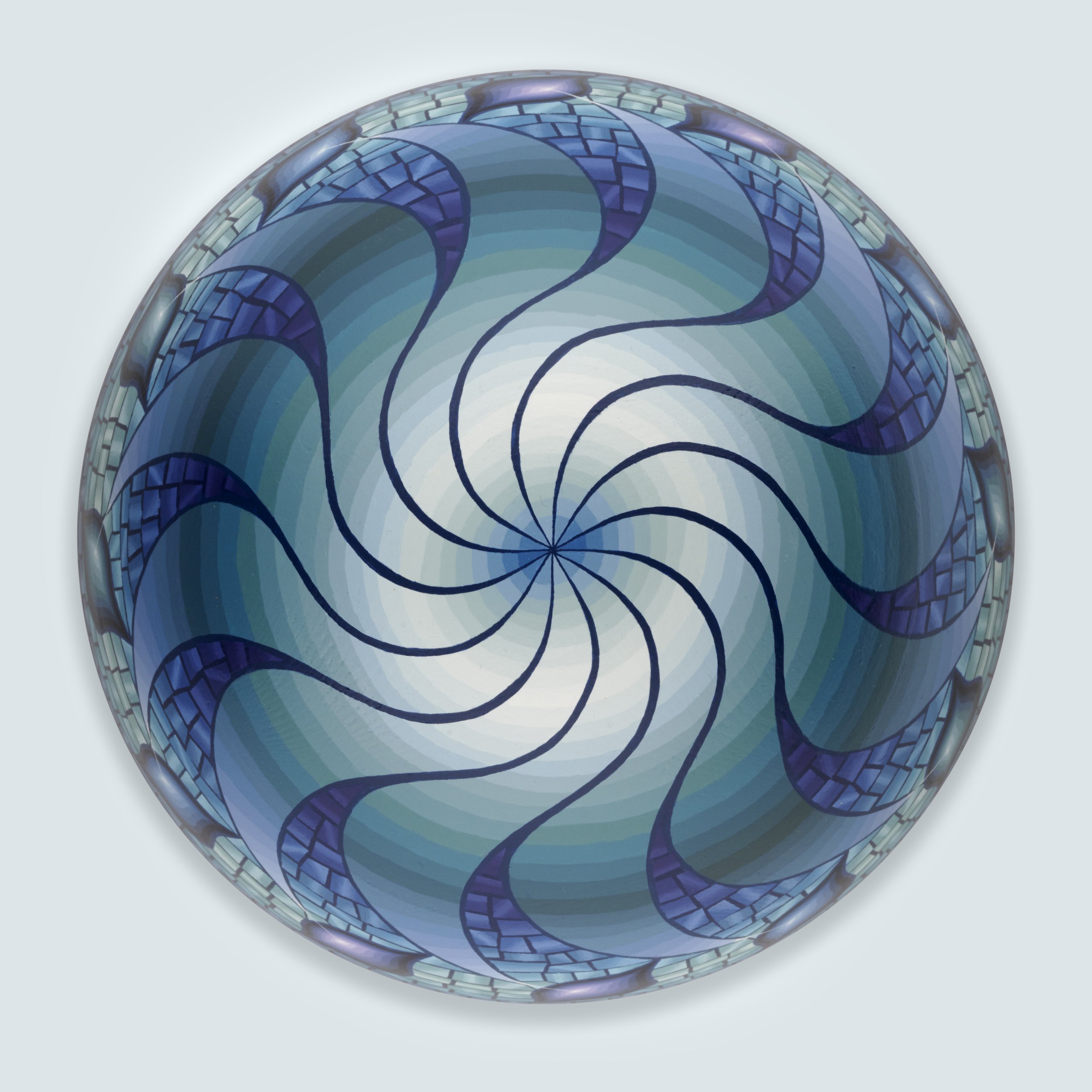
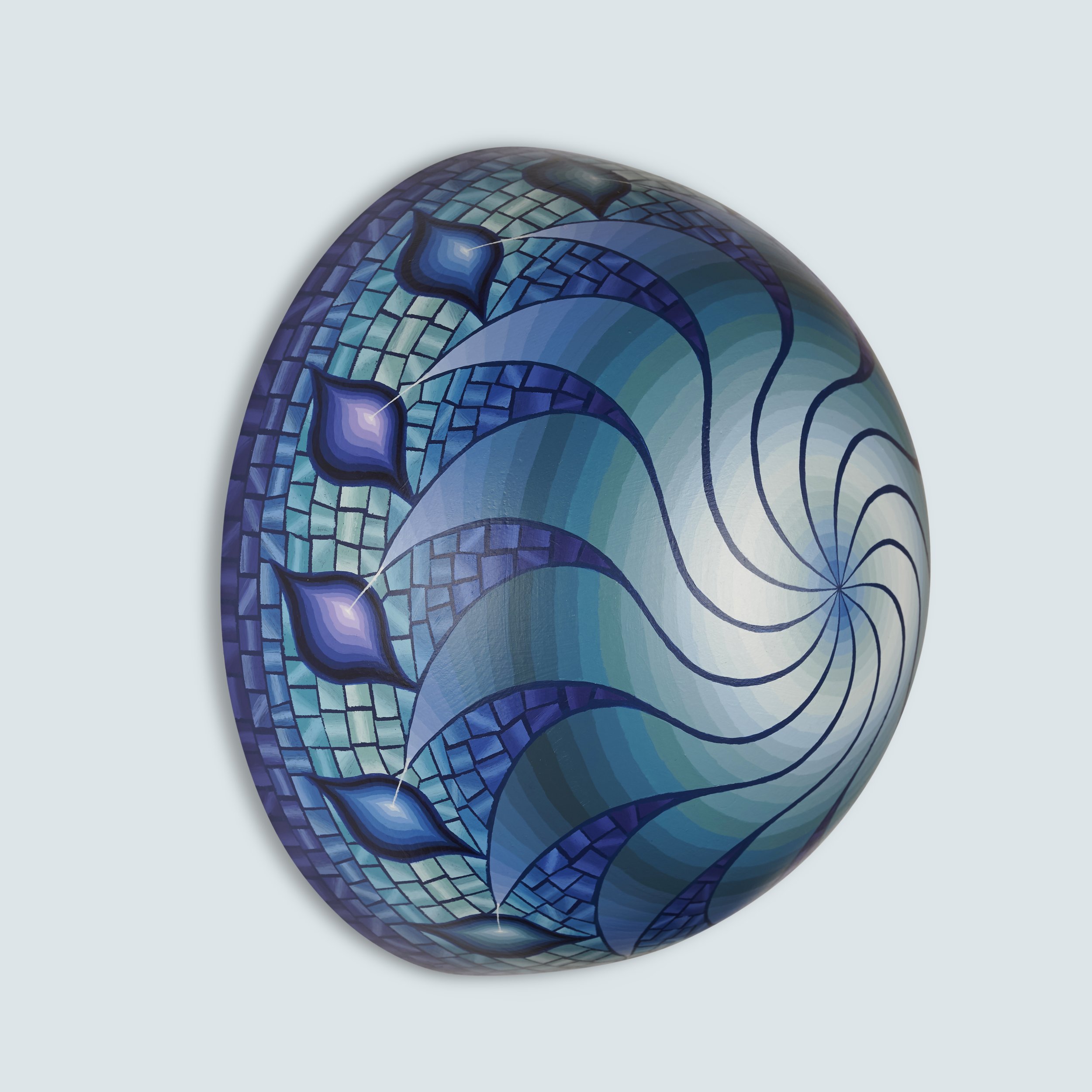
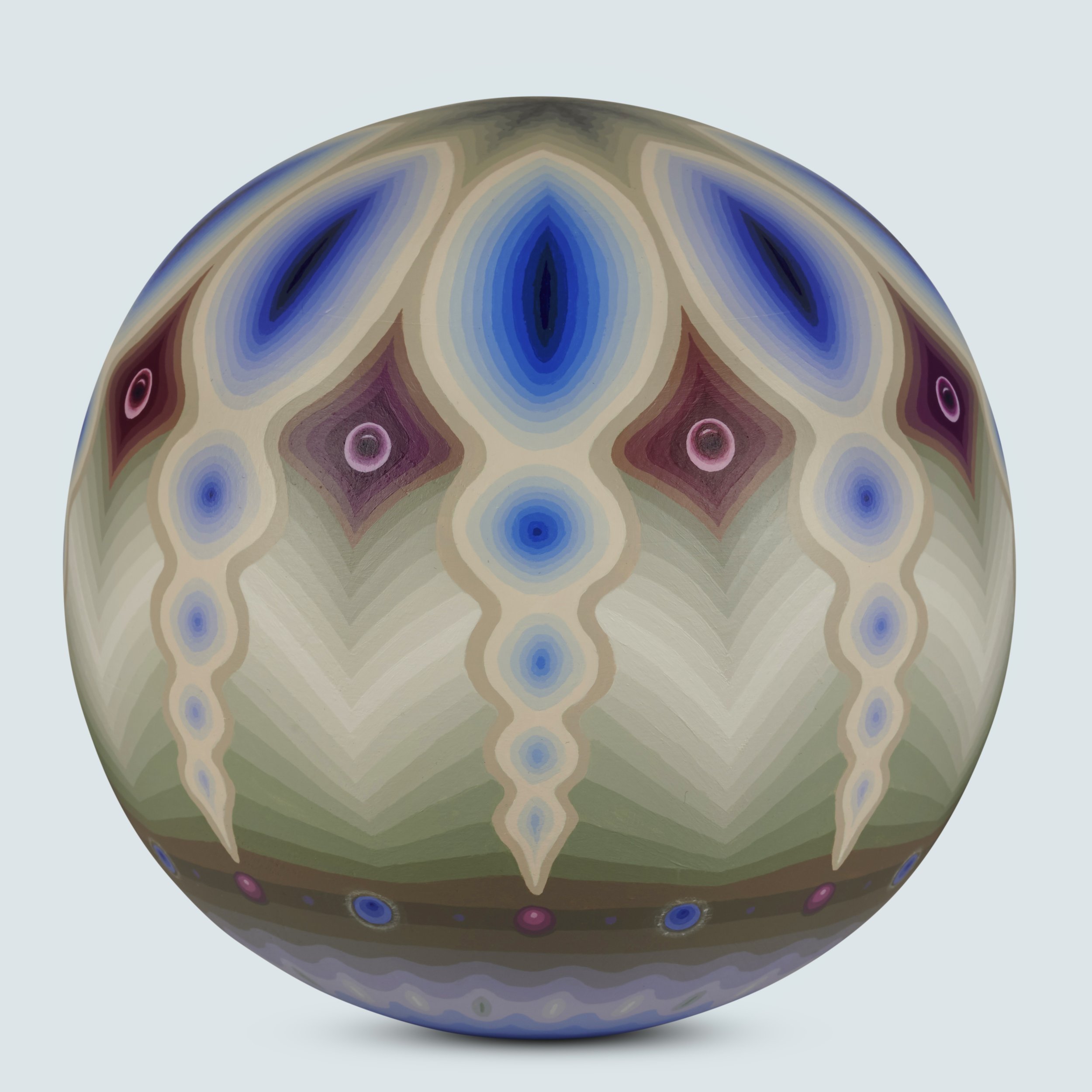
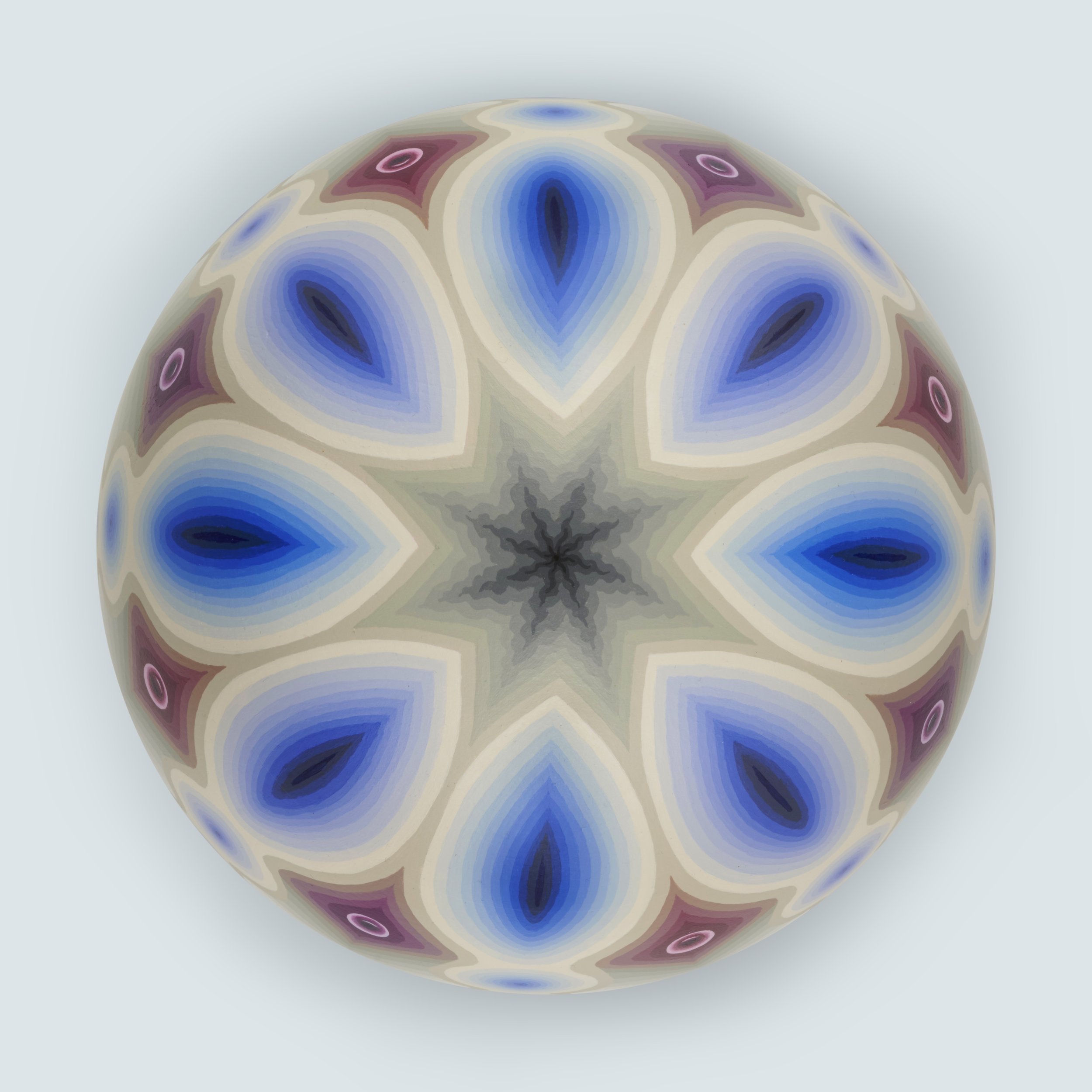
Erika: That seems like a very natural progression in your art. When I’m looking at your works it is as if the two dimensional paintings are curving outward when they are in fact flat and whenever I see a photo of the sculptures they can appear to be in two dimensions but the shape of them is revealed in the second photo.
Rebekka: What is your artistic relation to three-dimensional works? Is it something you have considered?
Erika: Many years ago I had made some of my watercolor paintings into sculptures and I’m starting to think about this again. While I continue to make works on paper and delve into painting on canvas it can be inspiring and challenging to introduce new forms into my work.
Erika: What is next for you? Do you have any recent projects or exhibitions you would like to talk about?
Rebekka: Currently I am preparing some bigger wooden spheres (50 cm in diameter) and in general I am really exploring the sculptural medium, which is something I will continue this year.
In regards to exhibitions, I was selected in an Open Call here in Denmark called UDS’22 (Young Danish Contemporary Art 2022). This exhibition was held in spring in a place called ‘Kunstbygningen i Vraa’, which is an amazing exhibition space. This is definitely something I am very excited about.
Rebekka Borum’s studio in Denmark
Rebekka: How about you? Any exhibitions or projects you would like to share?
Erika: I had two solo shows in 2021, “Reawakening” at Kristen Lorello in New York, NY and “Luminous Bloom” at Epsilon Spires in Brattleboro, VT. Kristen Lorello also presented my work in December at the NADA art fair in Miami, FL. This year I’ll be working in my studio dreaming up new paintings.
Erika Somogyi’s Brooklyn studio
